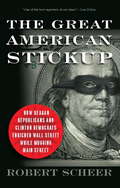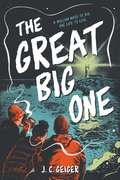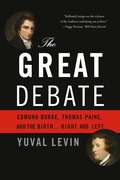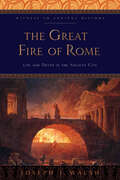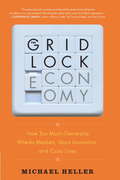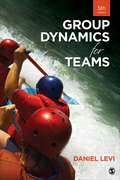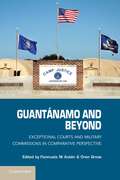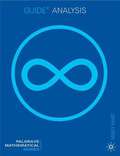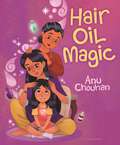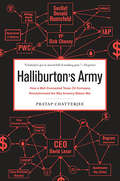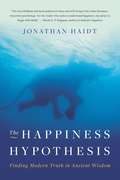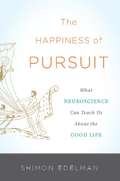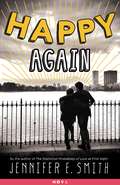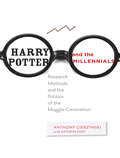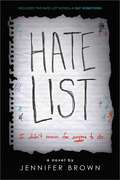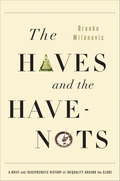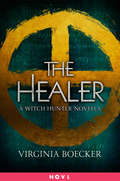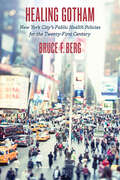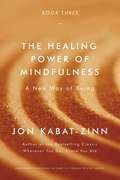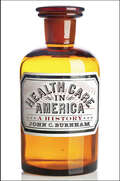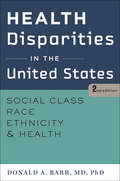- Table View
- List View
The Great American Stickup: How Reagan Republicans and Clinton Democrats Enriched Wall Street While Mugging Main Street
by Robert ScheerIn The Great American Stickup, celebrated journalist Robert Scheer uncovers the hidden story behind one of the greatest financial crimes of our time: the Wall Street financial crash of 2008 and the consequent global recession. Instead of going where other journalists have gone in search of this story—the board rooms and trading floors of the big Wall Street firms—Scheer goes back to Washington, D.C., a veritable crime scene, beginning in the 1980s, where the captains of the finance industry, their lobbyists and allies among leading politicians destroyed an American regulatory system that had been functioning effectively since the era of the New Deal. This is a story largely forgotten or overlooked by the mainstream media, who wasted more than two decades with their boosterish coverage of Wall Street. Scheer argues that the roots of the disaster go back to the free-market propaganda of the Reagan years and, most damagingly, to the bipartisan deregulation of the banking industry undertaken with the full support of &“progressive&” Bill Clinton. In fact, if this debacle has a name, Scheer suggests, it is the &“Clinton Bubble,&” that era when the administration let its friends on Wall Street write legislation that razed decades of robust financial regulation. It was Wall Street and Democratic Party darling Robert Rubin along with his clique of economist super-friends—Alan Greenspan, Lawrence Summers, and a few others—who inflated a giant real estate bubble by purposely not regulating the derivatives market, resulting in the pain and hardship millions are experiencing now.The Great American Stickup is both a brilliant telling of the story of the Clinton financial clique and the havoc it wrought—informed by whistleblowers such as Brooksley Born, who goes on the record for Scheer—and an unsparing anatomy of the American business and political class. It is also a cautionary tale: those who form the nucleus of the Clinton clique are now advising the Obama administration.
The Great Big One
by J. C. GeigerWith natural disasters and nuclear war threatening their small town, two twin brothers find themselves enraptured by mysterious music that could change the course of their lives.Everyone in Clade City knows their days are numbered. The Great Cascadia Earthquake will destroy their hometown and reshape the entire West Coast—if they survive long enough to see it. Nuclear war is increasingly likely. Wildfires. Or another pandemic. To Griff, the daily forecast feels partly cloudy with a chance of apocalyptic horsemen.Griff&’s brother, Leo, and the Lost Coast Preppers claim to be ready. They&’ve got a radio station. Luminous underwater monitors. A sweet bunker, and an unsettling plan for &“disaster-ready rodents.&” But Griff&’s more concerned about what he can do before the end times. He&’d like to play in a band, for one. Hopefully with Charity Simms. Her singing could make the whole world stop.When Griff, Leo, and Charity stumble upon a mysterious late-night broadcast, one song changes everything. It&’s the best band they&’ve ever heard—on a radio signal even the Preppers can&’t trace. They vow to find the music, but aren&’t prepared for where their search will take them. Or for what they&’ll risk, when survival means finding the one thing you cannot live without.
The Great Debate: Edmund Burke, Thomas Paine, and the Birth of Right and Left
by Yuval LevinAn acclaimed portrait of Edmund Burke, Thomas Paine, and the origins of modern conservatism and liberalismIn The Great Debate, Yuval Levin explores the roots of the left/right political divide in America by examining the views of the men who best represented each side at its origin: Edmund Burke and Thomas Paine. Striving to forge a new political path in the tumultuous age of the American and French revolutions, these two ideological titans sparred over moral and philosophical questions about the nature of political life and the best approach to social change: radical and swift, or gradual and incremental. The division they articulated continues to shape our political life today.Essential reading for anyone seeking to understand the basis of our political order and Washington's acrimonious rifts today, The Great Debate offers a profound examination of what conservatism, progressivism, and the debate between them truly amount to.
The Great Fire of Rome: Life and Death in the Ancient City (Witness to Ancient History)
by Joseph J. WalshPeril was everywhere in ancient Rome, but the Great Fire of 64 CE was unlike anything the city had ever experienced. No building, no neighborhood, no person was safe from conflagration. When the fire finally subsided—after burning for nine days straight—vast swaths of Rome were in ruins. The greatest city of the ancient world had endured its greatest blow. In The Great Fire of Rome, Joseph J. Walsh tells the true story of this deadly episode in Rome's history. He explains why Rome was such a vulnerable tinderbox, outlines the difficulties of life in that exciting and dangerous city, and recounts the fire's aftermath and legacy—a legacy that includes the transformation of much of ancient Rome into a modern city. Situating the fire within the context of other perils that residents of Rome faced, including frequent flooding, pollution, crime, and dangerously shoddy construction, he highlights the firefighting technology of the period and examines the ways in which the city's architecture and planning contributed to the severity of the blaze. Introducing readers to the grim realities of life in that overwhelming and overwhelmed city while chronicling its later glories, The Great Fire of Rome is grounded in the latest scholarship on fire analysis and forensics. Walsh's multifaceted analysis, balanced insights, and concise, accessible prose make this book a versatile teaching tool. Readers interested in ancient (and modern) Rome, urban life, and civic disasters, among other things, will be fascinated by this book.
The Great Fire of Rome: Life and Death in the Ancient City (Witness to Ancient History)
by Joseph J. WalshPeril was everywhere in ancient Rome, but the Great Fire of 64 CE was unlike anything the city had ever experienced. No building, no neighborhood, no person was safe from conflagration. When the fire finally subsided—after burning for nine days straight—vast swaths of Rome were in ruins. The greatest city of the ancient world had endured its greatest blow. In The Great Fire of Rome, Joseph J. Walsh tells the true story of this deadly episode in Rome's history. He explains why Rome was such a vulnerable tinderbox, outlines the difficulties of life in that exciting and dangerous city, and recounts the fire's aftermath and legacy—a legacy that includes the transformation of much of ancient Rome into a modern city. Situating the fire within the context of other perils that residents of Rome faced, including frequent flooding, pollution, crime, and dangerously shoddy construction, he highlights the firefighting technology of the period and examines the ways in which the city's architecture and planning contributed to the severity of the blaze. Introducing readers to the grim realities of life in that overwhelming and overwhelmed city while chronicling its later glories, The Great Fire of Rome is grounded in the latest scholarship on fire analysis and forensics. Walsh's multifaceted analysis, balanced insights, and concise, accessible prose make this book a versatile teaching tool. Readers interested in ancient (and modern) Rome, urban life, and civic disasters, among other things, will be fascinated by this book.
The Gridlock Economy: How Too Much Ownership Wrecks Markets, Stops Innovation, and Costs Lives
by Michael HellerTwenty-five new runways would eliminate most air travel delays in America; fifty patent owners are blocking a major drug company from creating a cancer cure; 90 percent of our broadcast spectrum sits idle while American cell phone service suffers. These problems have solutions that can jump-start innovation and help save our troubled economy. So, what's holding us back?Michael Heller, a leading authority on property, reveals that while private ownership creates wealth, too much ownership means that everyone loses. Startling and accessible, The Gridlock Economy offers insights on how we can overcome this preventable paradox.
Group Dynamics For Teams (PDF)
by Daniel J. Jay LeviIncorporating the latest research throughout, Daniel Levi's Fifth Edition of Group Dynamics for Teams explains the basic psychological concepts of group dynamics, focusing on their application with teams in the workplace. Grounded in psychology research and a practical focus on organizational behavior issues, this engaging book helps readers understand and more effectively participate in teams.
Guantanamo and Beyond: Exceptional Courts and Military Commissions in Comparative Perspective (PDF)
by Oren Gross Fionnuala Ni AolainThis book brings together the viewpoints of leading scholars and policy makers on the topic of exceptional courts and military commissions with a series of unique contributions setting out the current 'state of the field'. The book assesses the relationship between such courts and overlapping legal arenas including constitutional law, international law, international human rights law and international humanitarian law. The Military Commissions scheme established by President George W. Bush in November 2001 has garnered considerable controversy. In parallel with the detention facilities at Guantanamo Bay, Cuba, the creation of military courts has focused significant global attention on the use of such courts to process and try persons suspected of committing terrorist acts or offenses during armed conflict.
Guide To Analysis (PDF)
by Mary HartThis textbook aims to guide undergraduate students through the first year of their mathematics course. It provides a rigorous introduction to analysis, which takes into account the difficulties students often face when making the transition from A Level mathematics to this higher level. Plenty of examples are provided, some of which have full, detailed solutions, and others which encourage the student to discover and investigate the ideas themselves. Hints are provided, but the book aims to build confidence and understanding in all topics. Alternate ISBN 9780333437889
Hair Oil Magic
by Anu ChouhanA beautiful picture book about the joyful magic in the tradition of hair oiling and a celebration of the bond between parent and child.Meenu loves Magic Hair Days, when Mommy mixes sweet-smelling oils together and massages the potion into Meenu's scalp and hair. It always leaves Meenu with a fuzzy, magical feeling. And after bath time, when Mom washes the oils out, Meenu's hair is soft and shining. When Meenu decides one day to mix the oils without any help, she discovers something's wrong: No matter how many oils she mixes, the magic just isn't there! What is she missing? But when Mommy comes to help, massaging Meenu's head, the fuzzy, magical feeling returns! Was it really in the oils, or something else? Inspired by Anu Chouhan's own memories and family, this author-illustrator debut is a lovely depiction of a cultural tradition and a delightful story that emphasizes that magical bond between parents and children.
Hair Oil Magic
by Anu ChouhanA beautiful picture book about the joyful magic in the tradition of hair oiling and a celebration of the bond between parent and child.Meenu loves Magic Hair Days, when Mommy mixes sweet-smelling oils together and massages the potion into Meenu's scalp and hair. It always leaves Meenu with a fuzzy, magical feeling. And after bath time, when Mom washes the oils out, Meenu's hair is soft and shining. When Meenu decides one day to mix the oils without any help, she discovers something's wrong: No matter how many oils she mixes, the magic just isn't there! What is she missing? But when Mommy comes to help, massaging Meenu's head, the fuzzy, magical feeling returns! Was it really in the oils, or something else? Inspired by Anu Chouhan's own memories and family, this author-illustrator debut is a lovely depiction of a cultural tradition and a delightful story that emphasizes that magical bond between parents and children.
Halliburton's Army: How a Well-Connected Texas Oil Company Revolutionized the Way America Makes War
by Pratap ChatterjeeHalliburton&’s Army is the first book to show, in shocking detail, how Halliburton really does business, in Iraq, and around the world. From its vital role as the logistical backbone of the U.S. occupation in Iraq—without Halliburton there could be no war or occupation—to its role in covering up gang-rape amongst its personnel in Baghdad, Halliburton&’s Army is a devastating bestiary of corporate malfeasance and political cronyism.Pratap Chatterjee—one of the world&’s leading authorities on corporate crime, fraud, and corruption—shows how Halliburton won and then lost its contracts in Iraq, what Dick Cheney and Donald Rumsfeld did for it, and who the company paid off in the U.S. Congress. He brings us inside the Pentagon meetings, where Cheney and Rumsfeld made the decision to send Halliburton to Iraq—as well as many other hot-spots, including Somalia, Yugoslavia, Uzbekistan, Afghanistan, Guantánamo Bay, and, most recently, New Orleans. He travels to Dubai, where Halliburton has recently moved its headquarters, and exposes the company&’s freewheeling ways: executives leading the high life, bribes, graft, skimming, offshore subsidiaries, and the whole arsenal of fraud. Finally, Chatterjee reveals the human costs of the privatization of American military affairs, which is sustained almost entirely by low-paid unskilled Third World workers who work in incredibly dangerous conditions without any labor protection.Halliburton&’s Army is a hair-raising exposé of one of the world&’s most lethal corporations, essential reading for anyone concerned about the nexus of private companies, government, and war.
Halliburton's Army: How a Well-Connected Texas Oil Company Revolutionized the Way America Makes War
by Pratap ChatterjeeHalliburton'sArmy is the first book to show, in shocking detail, how Halliburton really does business, in Iraq, and around the world. From its vital role as the logistical backbone of the U.S. occupation in Iraq -- without Halliburton there could be no war or occupation -- to its role in covering up gang-rape amongst its personnel in Baghdad, Halliburton'sArmy is a devastating bestiary of corporate malfeasance and political cronyism. Pratap Chatterjee -- one of the world's leading authorities on corporate crime, fraud, and corruption -- shows how Halliburton won and then lost its contracts in Iraq, what Dick Cheney and Donald Rumsfeld did for it, and who the company paid off in the U.S. Congress. He brings us inside the Pentagon meetings, where Cheney and Rumsfeld made the decision to send Halliburton to Iraq -- as well as many other hot-spots, including Somalia, Yugoslavia, Uzbekistan, Afghanistan, Guantámo Bay, and, most recently, New Orleans. He travels to Dubai, where Halliburton has recently moved its headquarters, and exposes the company's freewheeling ways: executives leading the high life, bribes, graft, skimming, offshore subsidiaries, and the whole arsenal of fraud. Finally, Chatterjee reveals the human costs of the privatization of American military affairs, which is sustained almost entirely by low-paid unskilled Third World workers who work in incredibly dangerous conditions without any labor protection.Halliburton'sArmy is a hair-raising exposéf one of the world's most lethal corporations, essential reading for anyone concerned about the nexus of private companies, government, and war.
The Happiness Hypothesis: Finding Modern Truth in Ancient Wisdom
by Jonathan HaidtThe bestselling author of The Righteous Mind and The Coddling of the American Mind draws on philosophical wisdom and scientific research to show how the meaningful life is closer than you thinkThe Happiness Hypothesis is a book about ten Great Ideas. Each chapter is an attempt to savor one idea that has been discovered by several of the world's civilizations -- to question it in light of what we now know from scientific research, and to extract from it the lessons that still apply to our modern lives and illuminate the causes of human flourishing. Award-winning psychologist Jonathan Haidt, the author of The Righteous Mind and The Coddling of the American Mind, shows how a deeper understanding of the world's philosophical wisdom and its enduring maxims -- like "do unto others as you would have others do unto you," or "what doesn't kill you makes you stronger" -- can enrich and even transform our lives.
The Happiness of Pursuit: What Neuroscience Can Teach Us About the Good Life
by Shimon EdelmanWhen fishing for happiness, catch and release. Remember these seven words-they are the keys to being happy. So says Shimon Edelman, an expert on psychology and the mind. In The Happiness of Pursuit, Edelman offers a fundamental understanding of pleasure and joy via the brain. Using the concept of the mind as a computing device, he unpacks how the human brain is highly active, involved in patterned networks, and constantly learning from experience. As our brains predict the future through pursuit of experience, we are rewarded both in real time and in the long run. Essentially, as Edelman discovers, it's the journey, rather than the destination, that matters. The idea that cognition is computation-the brain is a machine-is nothing new of course. But, as Edelman argues, the mind is actually a bundle of ongoing computations, essentially, the brain being one of many possible substrates that can support them. Edelman makes the case for these claims by constructing a conceptual toolbox that offers readers a glimpse of the computations underlying the mind's faculties: perception, motivation and emotions, action, memory, thinking, social cognition, learning and language. It is this collection of tools that enables us to discover how and why happiness happens.An informative, accessible, and witty tour of the mind, The Happiness of Pursuit offers insights to a thorough understanding of what minds are, how they relate to each other and to the world, and how we can make the best of it all.
Happy Again
by Jennifer E. SmithEllie O'Neill and Graham Larkin fell hard for each other when a misspelled email address unexpectedly brought them together. Now, over a year has passed since they said goodbye with the promise to stay in touch, and their daily emails have dwindled to nothing. Ellie is a freshman in college and has told herself to move on, and Graham has kept himself busy starring in more movies, as well as a few tabloid columns. But fate brought these two together once before--and it isn't done with them yet. In this sequel novella to This is What Happy Looks Like, Jennifer E. Smith revisits two beloved characters to tell the story of one magical night in Manhattan. When Ellie and Graham come face to face once more, can they get past the months of silence and the hurt feelings to find their happily-ever-after again? Word Count: ~18,000
Harry Potter and the Millennials: Research Methods and the Politics of the Muggle Generation
by Anthony GierzynskiWithout a doubt the Harry Potter series has had a powerful effect on the Millennial Generation. Millions of children grew up immersed in the world of the boy wizard—reading the books, dressing up in costume to attend midnight book release parties, watching the movies, and even creating and competing in Quidditch tournaments. Beyond what we know of the popularity of the series, however, nothing has been published on the question of the Harry Potter effect on the politics of its young readers—now voting adults. Looking to engage his students in exploring the connections between political opinion and popular culture, Anthony Gierzynski conducted a national survey of more than 1,100 college students and examined these connections as well as Millennial politics. Harry Potter and the Millennials tells the fascinating story of how the team designed the study and gathered results, explains what conclusions can and cannot be drawn, and reveals the challenges social scientists face in studying political science, sociology, and mass communication. Specifically, the evidence indicates that Harry Potter fans are more open to diversity and are more politically tolerant than nonfans; fans are also less authoritarian, less likely to support the use of deadly force or torture, more politically active, and more likely to have had a negative view of the Bush administration. Furthermore, these differences do not disappear when controlling for other important predictors of these perspectives, lending support to the argument that the series indeed had an independent effect on its audience. In this clear and cogent account, Gierzynski demonstrates how social scientists develop and design research questions and studies. An appendix of questions and resulting data, including graphs and diagrams, will appeal especially to instructors seeking to explain the nuances of political socialization. Gierzynski’s captivating analysis of media’s impact on political views, combined with the enjoyable Potter story details, makes for an irresistible project that social scientists can use to work a little magic in their classrooms.
Harry Potter and the Millennials: Research Methods and the Politics of the Muggle Generation
by Anthony GierzynskiWithout a doubt the Harry Potter series has had a powerful effect on the Millennial Generation. Millions of children grew up immersed in the world of the boy wizard—reading the books, dressing up in costume to attend midnight book release parties, watching the movies, and even creating and competing in Quidditch tournaments. Beyond what we know of the popularity of the series, however, nothing has been published on the question of the Harry Potter effect on the politics of its young readers—now voting adults. Looking to engage his students in exploring the connections between political opinion and popular culture, Anthony Gierzynski conducted a national survey of more than 1,100 college students and examined these connections as well as Millennial politics. Harry Potter and the Millennials tells the fascinating story of how the team designed the study and gathered results, explains what conclusions can and cannot be drawn, and reveals the challenges social scientists face in studying political science, sociology, and mass communication. Specifically, the evidence indicates that Harry Potter fans are more open to diversity and are more politically tolerant than nonfans; fans are also less authoritarian, less likely to support the use of deadly force or torture, more politically active, and more likely to have had a negative view of the Bush administration. Furthermore, these differences do not disappear when controlling for other important predictors of these perspectives, lending support to the argument that the series indeed had an independent effect on its audience. In this clear and cogent account, Gierzynski demonstrates how social scientists develop and design research questions and studies. An appendix of questions and resulting data, including graphs and diagrams, will appeal especially to instructors seeking to explain the nuances of political socialization. Gierzynski’s captivating analysis of media’s impact on political views, combined with the enjoyable Potter story details, makes for an irresistible project that social scientists can use to work a little magic in their classrooms.
Hate List: A Hate List Novella (Little Brown Novels)
by Jennifer BrownFor readers of Marieke Nijkamp's This Is Where It Ends, Hate List is a powerful and all-too-timely contemporary classic about the aftermath of a school shooting.Five months ago, Valerie Leftman's boyfriend, Nick, opened fire on their school cafeteria. Shot trying to stop him, Valerie inadvertently saved the life of a classmate, but was implicated in the shootings because of the list she helped create. A list of people and things she and Nick hated. The list he used to pick his targets.Now, after a summer of seclusion, Val is forced to confront her guilt as she returns to school to complete her senior year. Haunted by the memory of the boyfriend she still loves and navigating rocky relationships with her family, former friends, and the girl whose life she saved, Val must come to grips with her role in the tragedy that took place, in order to make amends and move on with her life.Jennifer Brown's critically acclaimed novel now includes the bonus novella Say Something, another arresting Hate List story.
The Haves and the Have-Nots: A Brief and Idiosyncratic History of Global Inequality
by Branko MilanovicWho is the richest person in the world, ever? Does where you were born affect how much money you&’ll earn over a lifetime? How would we know? Why—beyond the idle curiosity—do these questions even matter? In The Haves and the Have-Nots, Branko Milanovic, one of the world&’s leading experts on wealth, poverty, and the gap that separates them, explains these and other mysteries of how wealth is unevenly spread throughout our world, now and through time. Milanovic uses history, literature and stories straight out of today&’s newspapers, to discuss one of the major divisions in our social lives: between the haves and the have-nots. He reveals just how rich Elizabeth Bennet&’s suitor Mr. Darcy really was; how much Anna Karenina gained by falling in love; how wealthy ancient Romans compare to today&’s super-rich; where in Kenyan income distribution was Obama&’s grandfather; how we should think about Marxism in a modern world; and how location where one is born determines his wealth. He goes beyond mere entertainment to explain why inequality matters, how it damages our economics prospects, and how it can threaten the foundations of the social order that we take for granted. Bold, engaging, and illuminating, The Haves and the Have-Nots teaches us not only how to think about inequality, but why we should.
The Healer: A Witch Hunter Novella (The Witch Hunter)
by Virginia BoeckerDon't miss this bewitching novella, set in the world of The Witch Hunter.John Raleigh, one of the youngest and most talented magical healers in all of Anglia, can relieve any ailment except, perhaps, his own broken heart. Since the deaths of his mother and sister who burned at the stake for witchcraft, John has spent his nights lost in nightmares and his days drowning in melancholy. That is until he's summoned to the home of Nicholas Perevil, the most powerful wizard in the kingdom, who suffers from a mysterious illness that has confounded every other healer. John immediately knows that this is no normal sickness. Nicholas, it seems, is falling apart because of a dangerous curse, and their only clue for a cure is a single name--Elizabeth Grey. Who is this girl and how has she become mixed up with such dark magic? John must put these questions aside when Elizabeth is brought to him from the palace's prison on the brink of death. It will take everything he has to save her, and to save Nicholas, but perhaps he'll manage to save his heart along the way. Word count: ~14,000 words
Healing Gotham: New York City’s Public Health Policies for the Twenty-First Century
by Bruce F. BergThroughout its history, New York City has been challenged by a variety of public health crises. Since the nineteenth centuryâ€�when it became one of the first American cities to develop a comprehensive public health infrastructureâ€�New York has also stood at the forefront of formulating and implementing urban health policy. Healing Gotham examines in depth how the city has responded to five serious contemporary public health threats: childhood lead poisoning, childhood asthma, HIV/AIDS, obesity, and West Nile virus.Bruce F. Berg examines the rise and incidence of each condition in the city while explaining why the array of primary tools utilized by urban policy makersâ€�including monitoring and surveillance, education, regulations, and the direct provision of servicesâ€�have been successful in controlling public health problems. He also argues that forces such as race and ethnicity, New York City’s relationship to the state and federal government, the promotion of economic development, and the availability of knowledge related to preventing, treating, and managing illness all influence effective public health policy making.By contrasting these five particular cases, this exciting study allows scholars and students to compare public health policy through time and across type. It also helps policy makers understand how best to develop and implement effective public health strategies around the United States.
The Healing Power of Mindfulness: A New Way of Being
by Jon Kabat-ZinnDiscover how mindfulness can help you with healing. More than twenty years ago, Jon Kabat-Zinn showed us the value of cultivating greater awareness in everyday life with his now-classic introduction to mindfulness, Wherever You Go, There You Are. Now, in TheHealing Power of Mindfulness, he shares a cornucopia of specificexamples as to how the cultivation of mindfulness can reshape your relationship with your own body and mind--explaining what we're learning about neuroplasticity and the brain, how meditation can affect our biology and our health, and what mindfulness can teach us about coming to terms with all sorts of life challenges, including our own mortality, so we can make the most of the moments that we have. Originally published in 2005 as part of a larger book titled Coming to Our Senses, The Healing Power of Mindfulness features a new foreword by the author and timely updates throughout the text. If you are interested in learning more about how mindfulness as a way of being can help us to heal, physically and emotionally, look no further than this deeply personal and also "deeply optimistic book, grounded in good science and filled with practical recommendations for moving in the right direction" (Andrew Weil, MD), from one of the pioneers of the worldwide mindfulness movement.
Health Care in America: A History
by John C. BurnhamIn Health Care in America, historian John C. Burnham describes changes over four centuries of medicine and public health in America. Beginning with seventeenth-century concerns over personal and neighborhood illnesses, Burnham concludes with the arrival of a new epoch in American medicine and health care at the turn of the twenty-first century.From the 1600s through the 1990s, Americans turned to a variety of healers, practices, and institutions in their efforts to prevent and survive epidemics of smallpox, yellow fever, cholera, influenza, polio, and AIDS. Health care workers in all periods attended births and deaths and cared for people who had injuries, disabilities, and chronic diseases.Drawing on primary sources, classic scholarship, and a vast body of recent literature in the history of medicine and public health, Burnham finds that traditional healing, care, and medicine dominated the United States until the late nineteenth century, when antiseptic/aseptic surgery and germ theory initiated an intellectual, social, and technical transformation. He divides the age of modern medicine into several eras: physiological medicine (1910s–1930s), antibiotics (1930s–1950s), technology (1950s–1960s), environmental medicine (1970s–1980s), and, beginning around 1990, genetic medicine. The cumulating developments in each era led to today’s radically altered doctor-patient relationship and the insistent questions that swirl around the financial cost of health care.Burnham’s sweeping narrative makes sense of medical practice, medical research, and human frailties and foibles, opening the door to a new understanding of our current concerns.
Health Disparities in the United States: Social Class, Race, Ethnicity, and Health
by Donald A. BarrOutstanding Academic Title, Choice magazineThe health care system in the United States has been called the best in the world. Yet wide health disparities persist between different social groups, and many Americans suffer from poorer health than people in other developed countries. Donald A. Barr's Health Disparities in the United States explores how socioeconomic status, race, and ethnicity interact with socioeconomic inequality to create and perpetuate these health disparities. Examining the significance of this gulf for the medical community, cultural subsets, and society at large, Barr offers potential policy- and physician-based solutions for reducing health inequity in the long term.This popular course book, which has been fully updated, now incorporates significant new material, including a chapter on the profound effects of inequality on child development, behavioral choices, and adult health status. An essential text for courses in public health, health policy, and sociology, the second edition analyzes the complex web of social forces that influence health outcomes in the United States. This book is a vital teaching tool and a comprehensive reference for social science and medical professionals.
